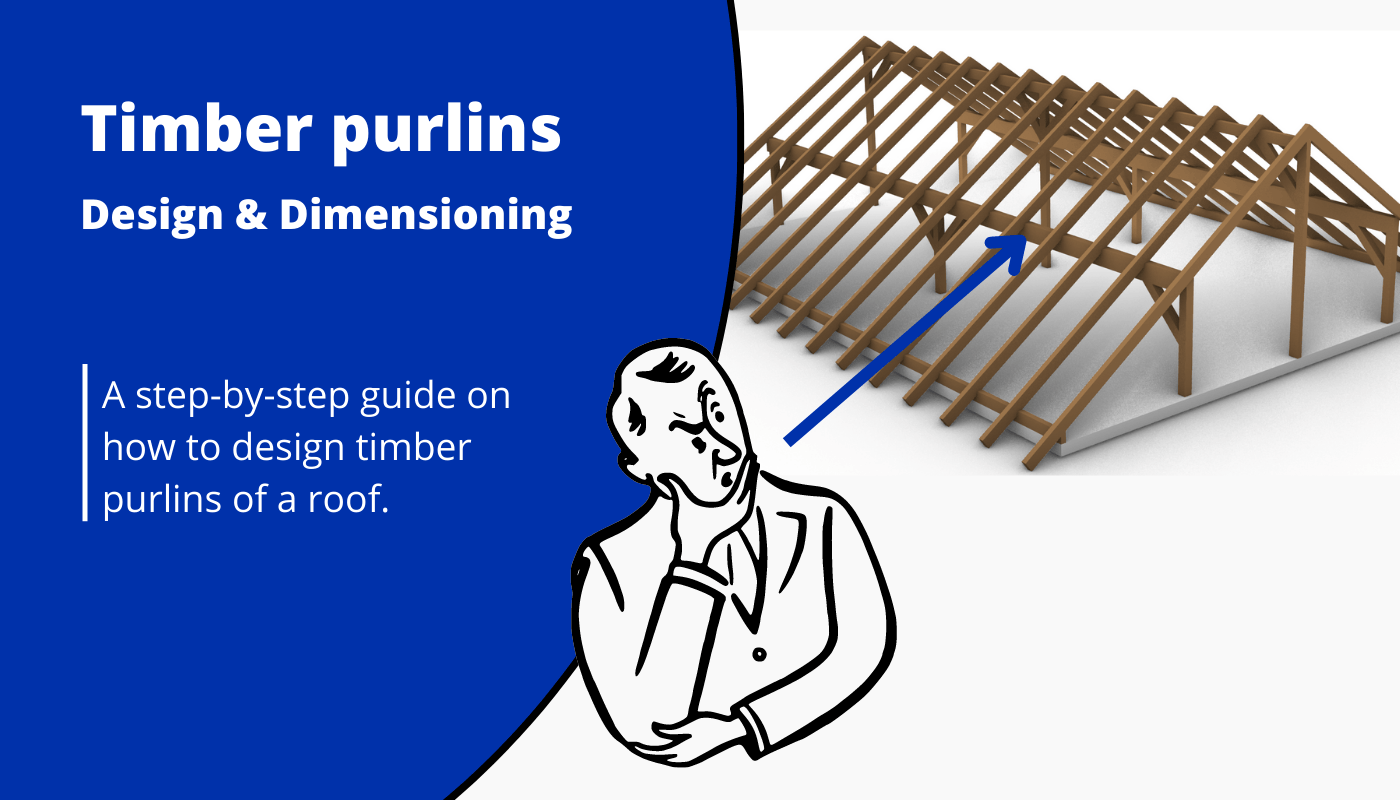To calculate wood beam load capacity, you need to determine the maximum load it can support based on its dimensions, species, and span length. When determining the load capacity of a wooden beam, factors such as the cross-sectional dimensions, the specific wood species, and the length of the span are crucial.
By considering these variables, you can accurately determine the maximum load that a wood beam can bear. Being able to calculate load capacity is essential for ensuring the safety and structural integrity of any construction project utilizing wooden beams. We will explore the steps involved in calculating wood beam load capacity and provide you with a comprehensive understanding of this crucial aspect of construction planning.
Understanding Load Capacity
Determine wood beam load capacity by calculating the load on the beam, combined with its properties and the support conditions. First, analyze the expected load, then evaluate the beam’s strength and the span length. Finally, use an engineer’s formula to compute the beam’s load capacity accurately.
Load capacity refers to the maximum weight or load that a wood beam can safely support without failing or breaking. It is an important factor to consider when designing or constructing any structure using wood beams. In order to ensure safety and structural integrity, it is crucial to accurately calculate the load capacity of a wood beam before installing it.
Types of Load Capacities
There are three main types of load capacities that need to be considered when calculating the load capacity of a wood beam:
1. Dead Load Capacity: This refers to the weight of the structure itself, including all permanent components such as walls, flooring, and roofing. Dead load capacity is calculated based on the weight per square foot or meter of the materials used.
2. Live Load Capacity: This refers to the weight of all temporary or movable loads that the structure may experience, such as furniture, people, and equipment. Live load capacity is typically expressed as a uniformly distributed load or a concentrated load, depending on the specific application.
3. Environmental Load Capacity: This refers to any additional loads that may be imposed on the wood beam due to environmental factors, such as wind, snow, earthquakes, or temperature changes. These loads are typically calculated based on local building codes and standards.
Factors Affecting Load Capacity
Several factors can affect the load capacity of a wood beam. It is crucial to consider these factors in order to accurately determine the beam’s ability to support a specific load. Some of the key factors include:
1. Species and Grade of Wood: Different species of wood have varying strength properties, and within each species, there are different grades of wood that have different load-bearing capabilities. It is important to choose the right wood species and grade for the specific application to ensure optimum load capacity.
2. Size and Shape of the Beam: The dimensions and shape of the wood beam play a significant role in determining its load capacity. Larger, thicker, and stiffer beams generally have higher load capacities compared to smaller or thinner beams.
3. Span Length: The distance between the supports or points of attachment for the wood beam, known as the span length, directly affects its load capacity. Longer spans can result in higher bending moments and greater deflections, which can reduce the beam’s load capacity.
4. Moisture Content: The moisture content of the wood can significantly affect its strength and load-bearing capacity. Moisture content should be taken into consideration when calculating the load capacity of a wood beam, as excessive moisture can weaken the beam over time.
It is important to remember that calculating wood beam load capacity requires a thorough understanding of engineering principles and knowledge of local building codes and standards. Consulting with a structural engineer or other qualified professionals is highly recommended to ensure accurate calculations and safe structural design.
Identifying Wood Beam Properties
When it comes to calculating wood beam load capacity, one of the first steps is to identify the wood beam’s properties. By understanding the wood species and grade, as well as the beam size and shape, you can determine the load capacity of the beam accurately. Let’s delve into each aspect to help you calculate the load capacity of your wood beam effectively.
Wood Species And Grade
The wood species and grade play crucial roles in determining the load capacity of a wood beam. Different wood species have varying strengths, and even within the same species, different grades can offer different load-bearing capacities.
Here is a table highlighting some commonly used wood species and their corresponding grades:
| Wood Species | Grade |
|---|---|
| Fir | #2 & Better |
| Pine | #1, #2, & Select Structural |
| Oak | Common #1 |
| Maple | Select #2 |
| Redwood | Construction Common |
By identifying the wood species and grade of your beam, you can refer to load capacity tables or consult with a structural engineer to determine the exact load capacity.
Beam Size And Shape
The size and shape of the wood beam also impact its load capacity. Generally, larger beams and those with specific shapes, such as I-beams, tend to have higher load capacities compared to smaller or irregularly shaped beams.
Here are a few factors to consider when identifying the size and shape of your wood beam:
- Beam depth: The vertical height of the beam
- Beam width: The horizontal width of the beam
- Beam length: The span or distance the beam will cover
- Beam shape: Common shapes include rectangular, square, or I-beam
By accurately measuring and understanding these dimensions, you can determine the load capacity of your wood beam more precisely.
Calculating Static Load Capacity
Calculating the static load capacity of wood beams is crucial for ensuring the structural integrity and safety of a building. By understanding the dead load and live load, one can determine the maximum weight a wood beam can support. This knowledge is essential for architects, engineers, and builders when designing and constructing buildings. Here, we’ll delve into the process of calculating static load capacity, focusing on determining dead load and evaluating live load.
Determining Dead Load
The dead load refers to the weight of the structure itself, including the wood beams, walls, floors, and any permanent fixtures. To calculate the dead load, one must identify the weight of each structural component and add them together to determine the total dead load.
Evaluating Live Load
The live load accounts for the variable weight that a structure may support, such as furniture, people, and equipment. When calculating the live load, it’s essential to consider the intended use of the space and the potential weight-bearing requirements.

Credit: www.linkedin.com
Assessing Dynamic Load Capacity
Impact loads are sudden forces placed on a wooden beam due to dynamic actions like falling objects or machinery vibrations.
Consider elements like wind, snow, or seismic activities that can exert additional stress on the wood beam.
Implementing Load Capacity Standards
Code Requirements
Code requirements set the standards for calculating wood beam load capacity.
Safety Factors
Safety factors ensure proper margin for error in load capacity calculations.
Utilizing Load Capacity Calculations
Utilizing Load Capacity Calculations is essential for ensuring the safety and structural integrity of wood beams. By accurately determining the load capacity, you can make informed decisions for construction projects, ensuring the beams can support the intended load without risk of failure.
Structural Design Considerations
Before diving into load capacity calculations, it’s crucial to consider various structural design aspects. Identify the type and size of wood beam being used, as different species and dimensions will have varying load-bearing capabilities.
Evaluate the span and support conditions, as these factors significantly influence the beam’s load capacity. Proper understanding of the specific application and intended load will guide the calculation process.
Load Capacity Testing
Load capacity testing is a critical step in accurately assessing the strength of wood beams. Conducting physical load tests allows you to directly measure how much weight the beam can support before reaching its limit.
- Test the beams under different loads to obtain a comprehensive understanding of their capacity.
- Document and analyze the test results to provide empirical data for load capacity calculations.
Enhancing Load Capacity
Increasing the load capacity of wood beams not only ensures the structural integrity of buildings but also enhances their overall performance. There are several techniques that can be employed to reinforce wood beams and maximize their load-bearing capabilities. In this section, we will explore two popular methods: reinforcement techniques and composite beam solutions.
Reinforcement Techniques
Reinforcement techniques play a vital role in enhancing the load capacity of wood beams. One effective technique is the installation of steel plates or angle irons to reinforce the beam’s top and bottom. These additional steel components distribute the load more evenly, minimizing the stresses placed on the wood. This method is commonly used in situations where the beam is subjected to heavy loads or spans long distances.
Another reinforcement technique involves using flitch plates, which consist of wood sandwiched between two steel plates. By combining the strength of steel with the flexibility of wood, flitch plates significantly increase the load capacity of the beam. This method is particularly beneficial when dealing with high-stress areas such as support beams or load-bearing walls.
| Pros | Cons |
|---|---|
| Improves load capacity | Requires professional expertise for installation |
| Distributes load evenly | May add additional weight to the structure |
| Increases beam’s resistance to bending | Additional cost for materials and labor |
Composite Beam Solutions
In addition to reinforcement techniques, composite beam solutions can also enhance the load capacity of wood beams. These solutions involve combining two or more materials to create a stronger and more durable structure. One example is the use of fiberglass-reinforced polymer (FRP) composites, which are lightweight and corrosion-resistant.
FRP composites provide excellent tensile strength, making them ideal for fortifying wood beams against bending or warping. By integrating FRP straps or laminates onto the wood beam’s surface, the load capacity can be significantly increased, without adding excessive weight to the structure. This solution is commonly used in high-moisture environments or when the beams are exposed to harsh weather conditions.
- FRP composites enhance load capacity
- Lightweight and corrosion-resistant
- Excellent tensile strength
- Integration of FRP straps or laminates

Credit: www.anstertrailer.com
Maintaining Load Capacity
To calculate wood beam load capacity, consider the wood species, dimensions, and span length. Use a beam deflection formula uniquely tailored to your specific situation. Regular maintenance of the wood beam ensures reliable load capacity over time.
When it comes to wood beam load capacity, it is crucial to ensure that the load-bearing capacity of your beams remains intact. Regular inspection and maintenance practices, as well as risk mitigation strategies, play a key role in maintaining the load capacity and overall structural integrity of your wood beams. Let’s delve into these two essential aspects in detail.
Inspection And Maintenance Practices
Regular inspection is essential to identify any signs of wear, damage, or deterioration that can compromise the load capacity of your wood beams. Here are some effective inspection and maintenance practices to follow:
1. Visual Inspection: Perform a visual inspection of your wood beams, looking out for any signs of cracks, splits, sagging, or twisting. These are indicators of structural issues that need immediate attention.
2. Check for Moisture Damage: Wood beams are prone to moisture damage, which can weaken their load-bearing capacity. Look for signs of rot or decay caused by excessive moisture. Address any moisture issues and consider using moisture-resistant coatings or treatments for enhanced protection.
3. Evaluate Connections: Examine the connections between the wood beams and other structural elements, such as columns or joists. Ensure that the connections are secure and that there are no signs of loosening or failure.
4. Verify Support Conditions: Make sure that the supports for your wood beams are still in good condition and properly aligned. Check for any settling, shifting, or deterioration of the supports that can affect the load capacity of the beams.
5. Schedule Regular Maintenance: Develop a maintenance schedule that includes regular inspections, cleaning, and necessary repairs. Follow manufacturer’s guidelines for maintenance procedures and materials to ensure optimal load capacity.
Risk Mitigation Strategies
Aside from regular inspections and maintenance, it is essential to implement risk mitigation strategies to prevent excessive loads or unexpected events that can compromise the load capacity of your wood beams. Consider the following strategies:
1. Weight Distribution: Ensure proper weight distribution on the wood beams by evenly distributing the load. Avoid concentrated heavy loads in one area to prevent overloading and potential structural failure.
2. Reinforcement Techniques: In cases where the load capacity of your wood beams is insufficient, consider reinforcements such as adding steel plates, additional beams, or laminations. Consult with a structural engineer to determine the most appropriate reinforcement technique for your specific situation.
3. Adhere to Design Guidelines: Adhere to the design guidelines provided by building codes and industry standards when constructing or altering the structure. These guidelines specify the minimum load capacity requirements and other structural considerations that must be followed.
4. Regular Load Capacity Assessment: Periodically assess the load capacity of your wood beams to ensure that it meets the required standards and can handle the intended loads. This can be done through load testing or consulting with a qualified engineer.
By implementing regular inspection and maintenance practices, as well as employing risk mitigation strategies, you can effectively maintain the load capacity of your wood beams. Remember, the structural integrity of your beams is paramount for ensuring the safety and stability of your entire structure.

Credit: www.structuralbasics.com
Frequently Asked Questions Of How Do You Calculate Wood Beam Load Capacity
How To Determine Wood Beam Load Capacity?
Knowing the wood species, beam size, and span length helps calculate load capacity accurately. Factor in supporting conditions for accurate results.
What Factors Influence Wood Beam Load Capacity?
Factors like wood types, beam sizes, span lengths, and load types significantly impact the load capacity of wood beams. Professional guidance may be necessary.
Can Wood Beam Load Capacity Be Exceeded?
Exceeding the specified load capacity for wood beams can lead to structural failure and safety hazards. It’s crucial to stay within safe load limits.
Conclusion
Calculating wood beam load capacity is a crucial step in construction projects. By understanding the various factors that impact load capacity, such as wood type, beam size, and span length, you can ensure structural integrity and safety. Utilize appropriate formulas and consult with professionals to guarantee accurate calculations.
This knowledge will support the successful completion of your building project.


